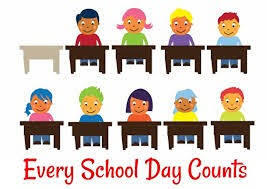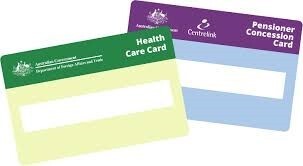Filter Content
Dear Parents and Carers
This Friday 23 June is the last day of Term 2. Our school day will finish at the normal time of 3.10pm. On Friday morning we invite parents to join our students in their classroom from 8.40am to 9.30am for some time to enjoy games and reading with their child(ren) in their learning environment. Following this we will holding a "Book Covering Workshop" in the Welcome Room, so come along, have a cuppa, meet some other parents and cover a few books.
Friday is also our traditional Pizza and PJ Day. What better way to finish the term than get to come to school in your pyjamas!
We do ask that you ensure students have sufficient layers to ensure they are warm enough when going outside and have appropriate footwear, especially those who will be particapting in their regular sport class on Friday.
SEMESTER 1 Reports
Your child's Semester 1 report will be available for you to access via PAM today (Wednesday 21 June).
Please take the time to read through your child's report. It is a very important piece of documentation that details your child's progress both academically and socially.
Parent Teacher Meetings will be held in Week 2 of Term 3 on Tuesday 18 July and Wednesday 19 July. Bookings for these will open at the beginning of Term 3 on Monday 10 July.
As we approach the midst of Winter we encourage all families to donate non-perishable food to St Vincent de Paul. Students can bring these donations to school and we will deliver all donations to St Vincent de Paul before the holidays. This will then be distributed to families who need support this Winter. Please donate up to Friday 23 June.
If every family brought in one item per student we would have approximately 600 items to donate. Suggested items include:
- Tins of food (soups, baked beans, tuna)
- Pasta
- Cereals
- Milo/Tea/Coffee
First Holy Communion 2023
A big thank you to parents and carers for supporting the students in their faith. 18 students received their First Holy Communion last weekend - they conducted themselves reverently and we are so proud of them all.








Buddy Time - Year 5 and Year 1
Our Year 1 students were fortunate enough to have some buddy time with their Year 5 buddies this week. During this time the students were supported by their buddy to publsh there narrative stories.












On Wednesdays and Thursdays the Arts Leaders Addison and Olivia run Lunch Time Club with a variety of activities and games.











A SPECIAL REPORT: Celebrating NAIDOC Week
NAIDOC week celebrates the history, culture and achievements of Aboriginal and Torres Strait Islander people. It is celebrated by all Australians and is a great opportunity to recognise and learn more about the history and culture of indigenous communities.
NAIDOC stands for National Aborigines and Islanders Day Observance Committee. Its origins can be traced back to the Aboriginal rights movement, when on Australia Day 1938, protestors marched through the streets of Sydney to highlight the status and treatment of Aboriginal and Torres Strait Islander Australians. Today, it is a week-long celebration held in July that consists of range of traditional and contemporary activities.
NAIDOC Week is an important event that helps build positive relationships between Aboriginal and non-Aboriginal people. It enables a deeper understanding of our differences and similarities. NAIDOC week is an opportunity for all Australians to eliminate bias and discrimination by reflecting and reconciling the wrongs of the past to facilitate hope and build a fairer future. Families are encouraged to join in and support young people in learning the significance of NAIDOC Week.
This Special Report offers suggestions on how families can celebrate NAIDOC Week together.
Here is the link to your special report:
https://stclaresofficer.catholic.schooltv.me/wellbeing_news/special-report-celebrating-naidoc-week
Please complete the Application for Leave During Term Form if your child is going to be absent for more than 3 school days. The form is below and can also be accessed via PAM in the Knowledgebank.
Here is the link for the St Clare's Parent Access Module (PAM)
St Clare's PAM
You username is the email address that you have registered with the school. The first time you log in we ask that you use the forgotten password feature to set your own password.
ALL parents must access PAM to receive up to date information and grant necessary permissions. Students will miss out on events if permission is not granted.
School Fees
Term 2 fees are now overdue. Please contact the school to arrange payment.
If you are experiencing financial difficulties please contact the school via finance@stclaresofficer.catholic.edu.au for a confidential discussion.
If you financial situation has now changes and you have a Pension or Health Care Card please let us know that this will impact your school fees payable.
How to Help Kids Stay Safe Online
Adapted from: https://www.esafety.gov.au/about-us/blog Office of the eSafety Commissioner
- Start the chat
It’s not possible to be at your child’s side every second of the day, so it’s important to talk with them about online safety issues to help develop their critical thinking and ability to make good choices. It’s also good to let them know they can come to you for help if they have any concerns. You may feel they know more about the latest technology than you do, but you have more life experience to guide them.
- With primary school aged children use online devices in the open living spaces at home to make parent supervision part of the expectation for your child.
- Take the opportunity to set some boundaries around when and where they can use devices like tablets, smart TVs and gaming consoles, to help limit potential tech tantrums — you could even fill in an Early Years Family Tech Agreement
- Screen free time before bed is important for good sleep. Consider charging devices in a central location at a regular time each night to allow an hour screen free before bed.
- While you are all at home more, it’s a great time to co-view and co-play with your kids, so you can understand what they are doing and experiencing online.
- Learn about the games, apps, social media and platforms they are using at The eSafety Guide, including how to protect their information and report inappropriate content or conduct.
- Use parental controls and safe search options
Parental controls can help block your child from accessing specific websites, apps or functions. They can also monitor your child’s use of connected devices and set time limits. But beware! You cannot always rely on them — they should be used in combination with other online safety strategies.
- Parental controls are available on most tablets, smartphones, computers, TVs and gaming consoles.
- You can also download family safety controls or buy robust filters out of the box.
- You can set up child-friendly search engines, or select safe search settings on digital devices, to help prevent your child from stumbling across inappropriate sites and content.
- Check smart toy settings
It’s surprising how many toys or devices can connect online these days, from drones and smart teddies to tablets and wearables. While they can be both entertaining and educational, they can reveal your child’s personal details and location — and allow other people to contact them without you knowing. You can help keep them stay safe by:
- setting strong passwords
- turning off location settings
- limiting the amount of personal information shared.
The eSafety Gift Guide has advice on what to check for and how to stay safe.
- Look out for unwanted contact and grooming
Unwanted contact is any communication that makes your child feel uncomfortable or unsafe, even if they initially welcomed the contact. It can come from a stranger, an online ‘friend’ or even someone they actually know. At worst, it can involve ‘grooming’ — building a relationship with the child in order to sexually abuse them.
You can help by:
- making sure their accounts are private — including chat functions on games
- encouraging them to delete requests from strangers and any contacts they don’t know in person
- checking in with your child as they use online devices in the open living spaces at home
- reporting and blocking anyone suspicious on a website or service
- remembering that if suspicious online contacts become aggressive or threatening you should contact your local police.
- Know the signs of cyberbullying
Kids who are bored by long periods at home can pick at each other, and that happens online too. So it’s important to keep an eye out for cyberbullying. It can include mean posts, comments and messages, as well as being left out of online group activities like gaming.
- Remember, when they are away from school, kids have less access to their usual support systems, including friends, teachers and counsellors.
- eSafety research shows that girls are more likely to be affected than boys and the person doing the bullying is generally someone they know from school.
- Watch out for signs such as your child appearing upset after using their mobile, tablet or computer, being unusually secretive about their online activities or becoming withdrawn.
- Cyberbullying can make social isolation worse and the longer it continues, the more stressed kids can become, impacting on their emotional and physical wellbeing.
What to do if your child is being cyberbullied
As parents, our first instinct may be to ban our children from social media, disable the wi-fi or turn off the data access. But this can actually compound the problem, making your child feel as if they’re being punished and heightening their sense of social exclusion.
There are four simple steps that can help minimise the harm:
- report the cyberbullying to the social media service where it is occurring
- collect evidence of the cyberbullying material
- if the material is still public 48 hours later, make a report to eSafety — we work with social media platforms to have the harmful content removed.
block the offending user.









